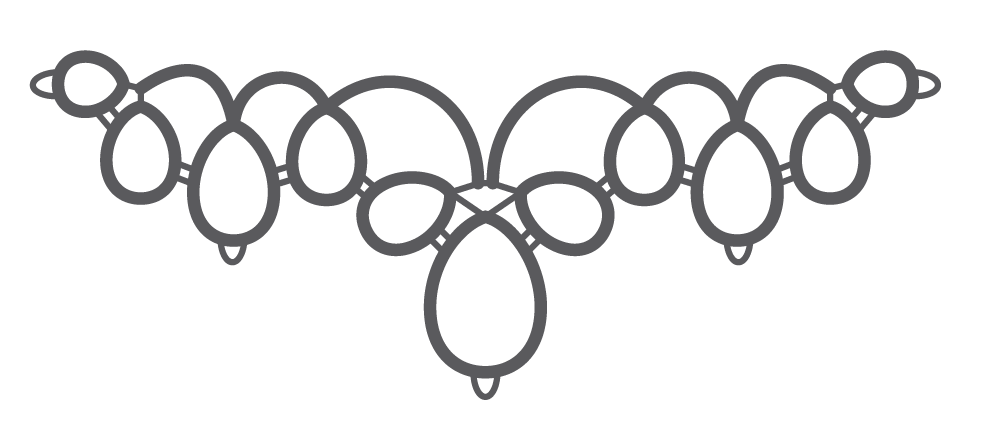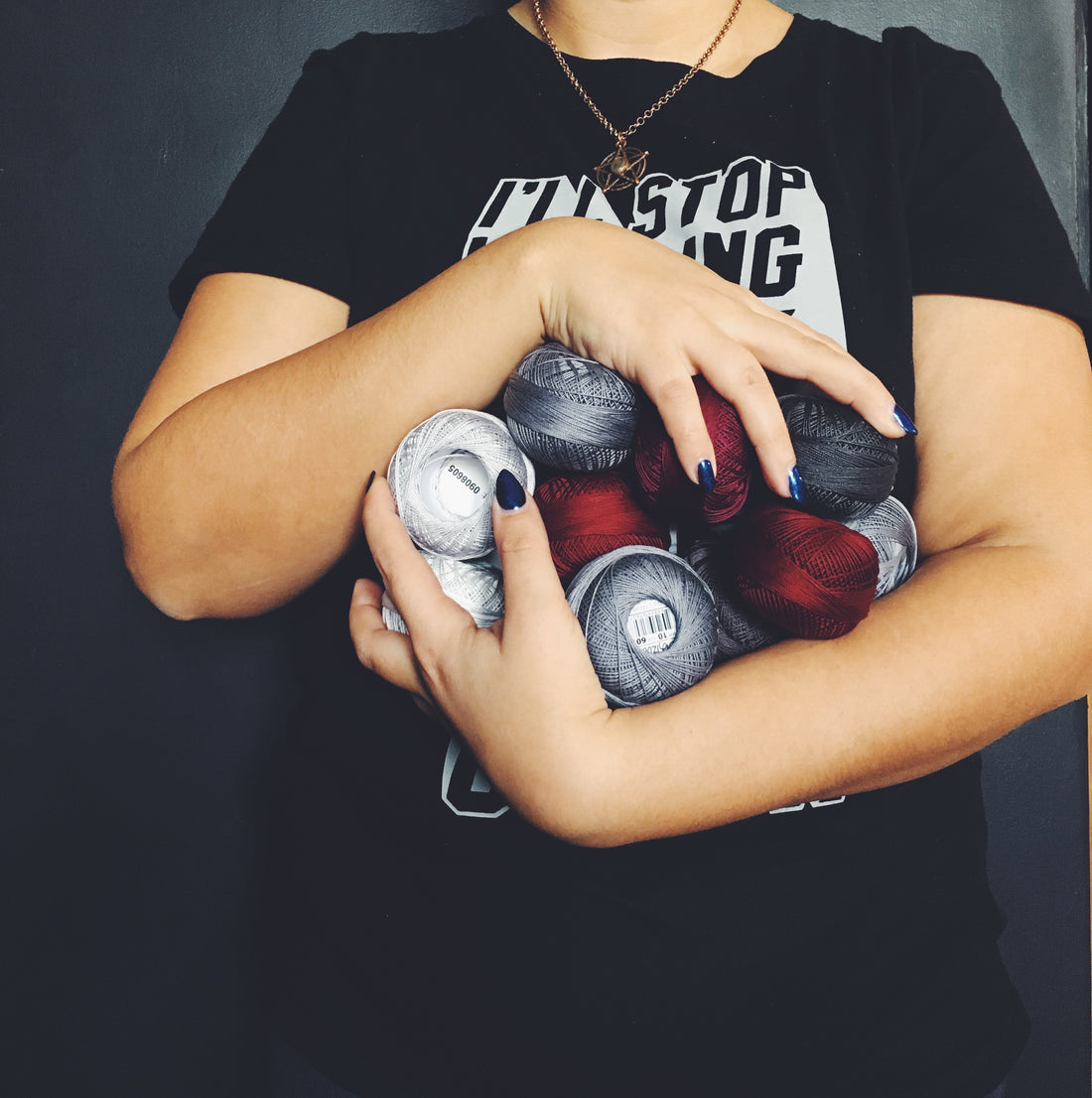In my last blog post, Top Five Tips For Beginning Shuttle Tatting, I briefly mentioned that a proper tatting thread is preferable for beginning over a standard crochet cotton or other types of craft threads. But what makes a tatting thread different and why does it matter?

Technically speaking, tatting thread is not really a thread. It's a cord. More specifically it's a six-cord cordonet. This means that there are six individual strands, of cotton. Each strand is plied, or twisted, with another strand, and then three of these double-ply strands are twisted together in the opposite direction. After plying, these cords are often "gas singed," meaning they are pulled through a gas flame very quickly while under tension. This removes any little ends of the cotton fibers that may be sticking out, creating a very smooth, very strong cord with little to no stretch.

Comparison of Aunt Lydia's crochet cotton (in black) and Lizbeth tatting thread, both in a size #3.
By contrast, crochet cottons, pearl cottons, and other similar threads are actually types of yarns. They are typically only 3-4 ply, without the signature "double twist" that tatting thread has. While some pearl cottons are mercerized (a chemical treatment that similarly removes fuzzy ends), most crochet cottons are not. Additionally, a lot of fibers intended for home crochet and knit projects are spun with copious amounts of air intentionally left between fibers, creating a fluffy and soft finish that's more pleasing to the touch. This leaves the fibers with a lot of room to stretch, and the fuzzy finish means that fibers will "stick" together, creating drag when attempting to slide stitches.

Close up detail of my Snow Queen's Shawl, tatted with 2-ply laceweight yarn.
None of this is to say that you should only ever use tatting thread. In fact, I encourage you to try a variety of threads, yarns, and cords to experiment with the difference it can make in how the finished lace looks and drapes. But for a beginner, it's best to stick with a smooth, strong tatting thread until you are able to confidently and consistently make evenly tensioned stitches.

